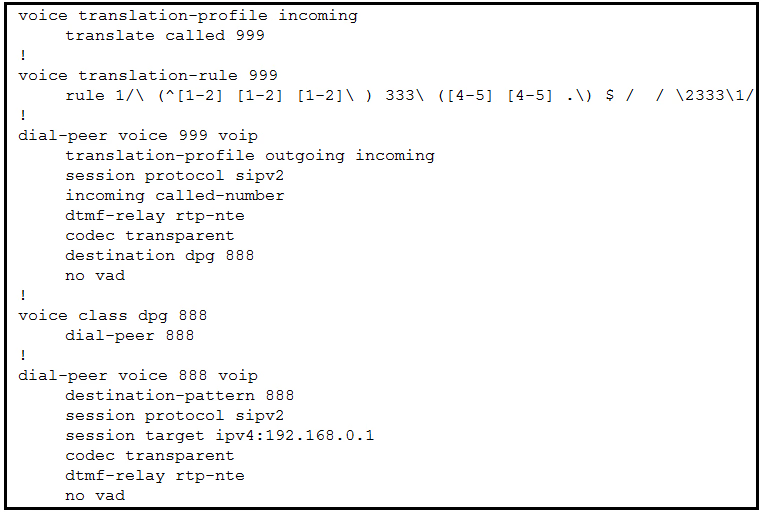
Refer to the exhibit. Calls incoming from the provider are not working through newly set up Cisco Unified Border Element. Provider engineers get the 404 Not
Found SIP message. Incoming calls are coming from the provider with called number "222333444" and Cisco Unified Communications Manager is expecting the called number to be delivered as "444333222". The administrator already verified that the IP address of the Cisco Unified CM is set up correctly and there are no dial peers configured other than those shown in the exhibit. Which action must the administrator take to fix the issue?